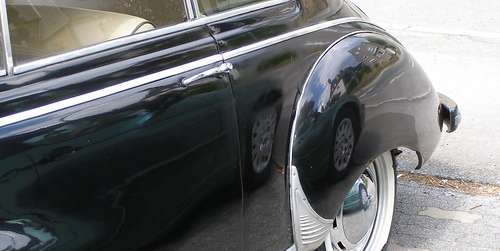
Metallic and high-gloss paints can present challenges to accurate color measurement. Image Source: Flickr user Erich Ferdinand
Recently, I was in the market for a new car. I scoured reviews, watched safety testing videos, and compared fuel efficiency to finally arrive at the perfect vehicle. I was sure this was the one for me and headed to online forums to try to get a sense of maintenance costs. What I found there stopped my automotive plans in their tracks: numerous owners reported that the paint color of one of the panels didn’t match the rest of the car. The problem was widespread and I could not be assured that the car I ordered wouldn’t have the same issue, so it was back to the drawing board.

